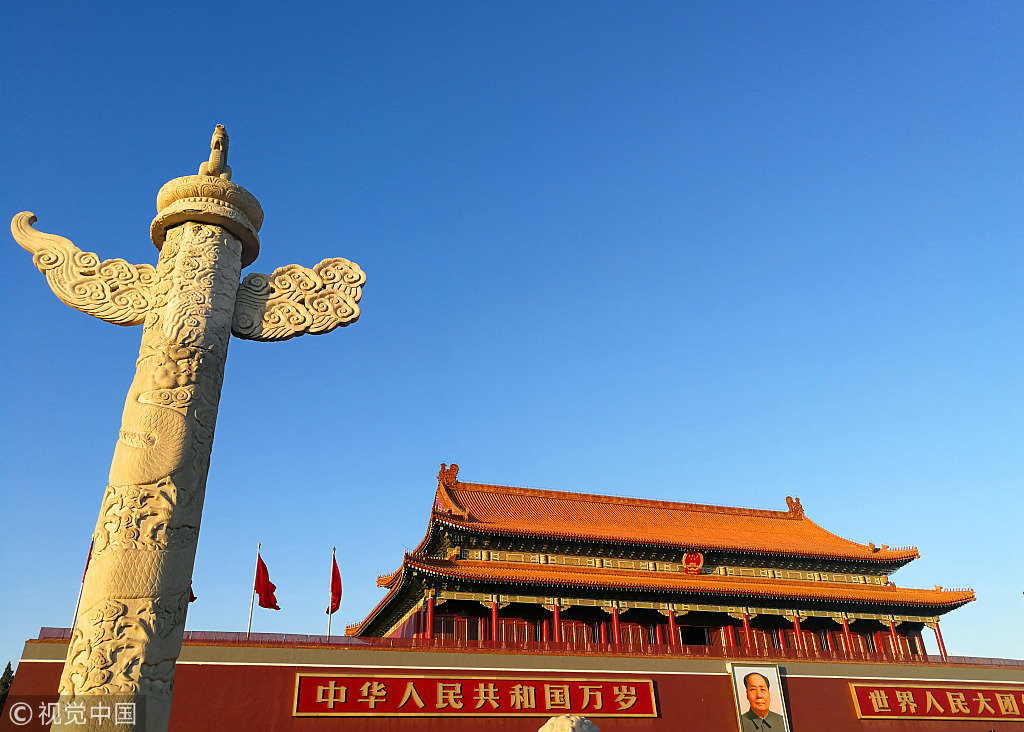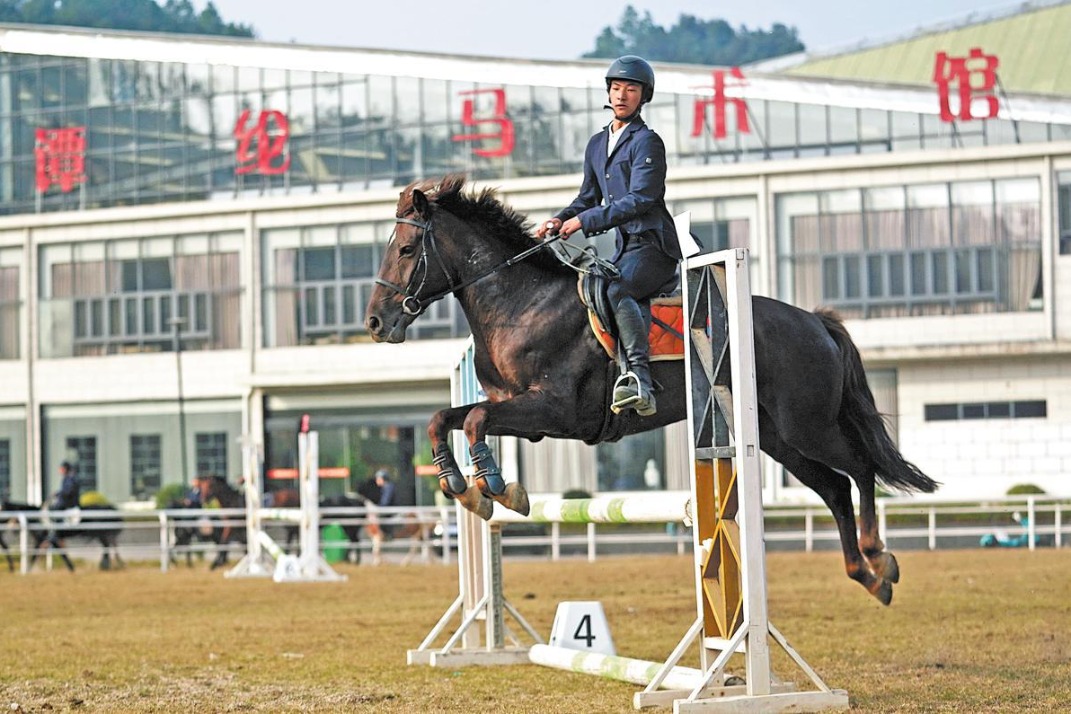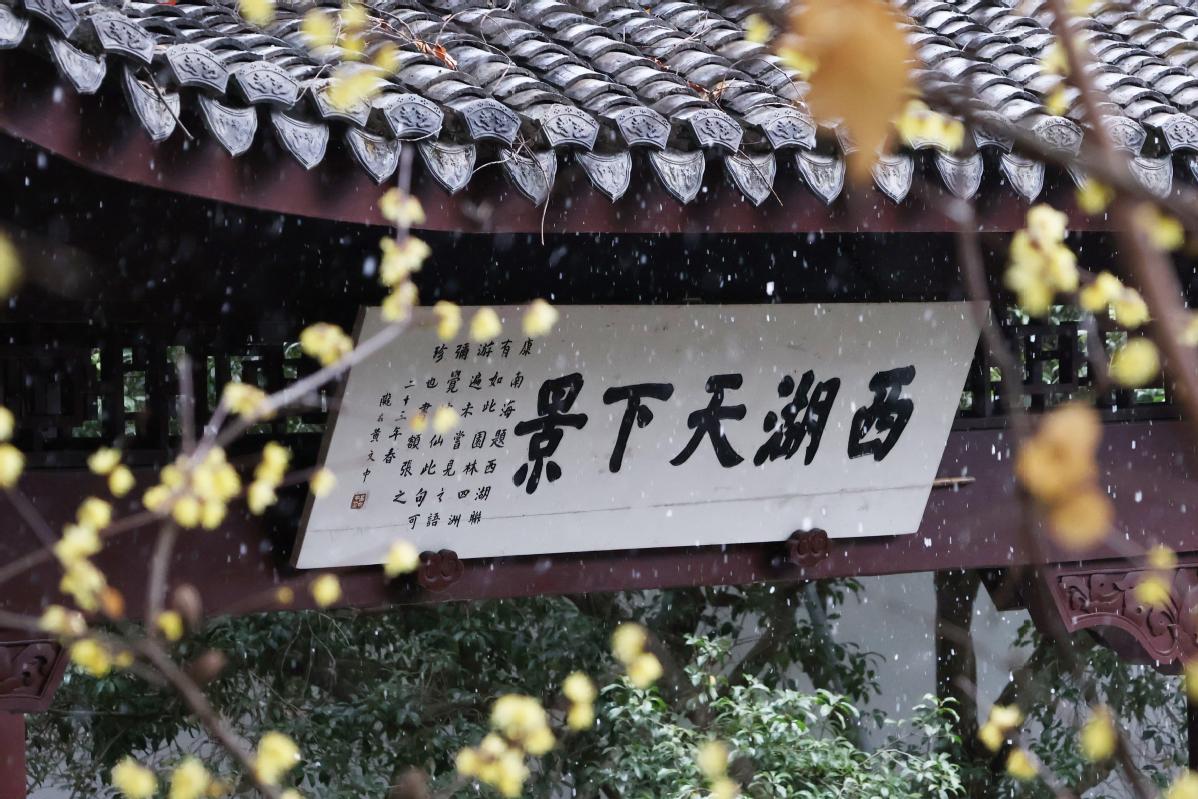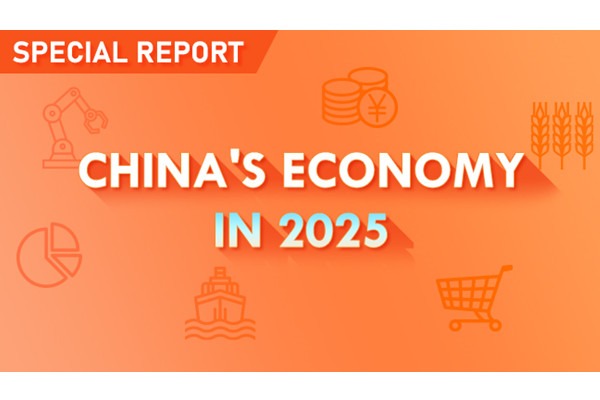More blue skies seen last year

Average air quality improved in 2018, as comprehensive controls 'worked

China saw improvements in air quality last year, with another drop in the number of smoggy days recorded, the top environmental authority said on Monday.
In 2018, the average concentration of PM2.5-particulate matter 2.5 microns or less in diameter that can be dangerous to humans-in 338 cities in China had been reduced by 9.3 percent from 2017 levels, reaching 39 micrograms per cubic meter, according to the Ministry of Ecology and Environment.
Blue sky days accounted for 79.3 percent of all days in 2018, up 1.3 percentage points from 2017, it said. Blue sky days refer to days when the average air quality index is lower than 100.
The Beijing-Tianjin-Hebei region also saw improvements in air quality last year, with the average concentration of PM2.5 down by 11.8 percent from 2017 to 60 micrograms per cubic meter, the ministry said in a statement.
In December, the capital, which is prone to smog in winter, experienced 86.7 percent of days with blue skies, up by 2.8 percentage points year-on-year, the ministry said.
China aims to improve its overall environmental quality and ensure a significant decrease in pollutant emissions by 2020, according to a high-level directive to toughen the fight against smog.
By 2020, the percentage of days with moderate and good air quality in cities needs to reach 80 percent, and the emission of sulfur dioxide and nitrogen oxides must be at least 15 percent lower than the level in 2015, according to a directive issued by the central leadership and the State Council in June.
By 2035, the country is expected to see its environment fundamentally improved after the industrial structure and people's lifestyles have become more environmentally friendly, it said.
The 10 cities with the best air quality in 2018 include cities in southern coastal regions such as Xiamen, Fujian province, and Haikou, Hainan province, and regions with limited industrial growth such as Lhasa, Tibet. However, Hebei province, China's biggest steel producing region, was the location of five of the country's 10 smoggiest cities in 2018, including Shijiazhuang, Xingtai and Tangshan.
Ma Jun, director with the Institute of Public and Environmental Affairs, a Beijing-based environmental NGO, said, "The improvement in air quality showed that comprehensive controls-including reducing coal consumption, shutting down companies that pollute, limiting the use of vehicles and strict inspection-worked."
However, he warned that despite the positive trend, the weather could still worsen in some regions during specific periods, so controls must continue.
- Disaster relief efforts underway after 5.1-magnitude quake hits China's Yunnan
- China's commercial space sector logged 50 launches in 2025
- Scientists discover single-walled carbon nanotubes, graphitic carbon in Chang'e 6 lunar samples
- Commercial, reusable Chinese rocket PALLAS-2 completes engine system test
- University to aid training for disasters
- Medical expert's concern about AI sparks discussion





































